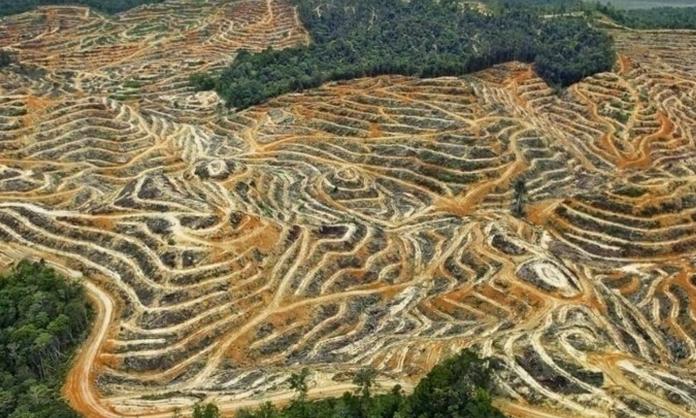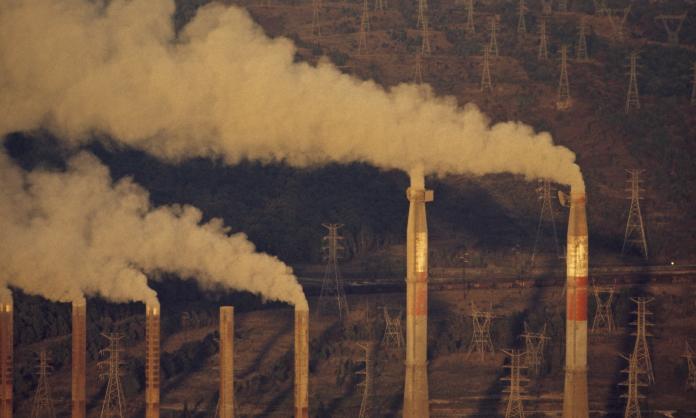Since we first evolved between 200,000 and 300,000 years ago, humans have altered the land on which we live. Our capacity to labour—to consciously shape our environment to better suit our needs—is our defining characteristic. There is nothing inherently destructive about this. For most of human history, our societies have developed without significantly damaging the ecosystems on which our survival depends.
Since the rise of capitalism and the industrial revolution, however, human activities have destroyed and degraded the world’s forests, grasslands, wetlands and other important ecosystems at an accelerating pace. Today, 75 percent of the Earth’s ice-free land has been significantly altered, and only 25 percent can still be considered wilderness.
As habitats have been degraded, disrupted and destroyed, biodiversity (the variety and number of living things) has been dramatically affected. The United Nations’ 2019 Global Assessment Report on Biodiversity and Ecosystem Services estimated that one million animal and plant species are now at risk of extinction. According to the World Wide Fund for Nature, which monitors more than 4,000 vertebrate species, population sizes have declined by an average of two-thirds in the last 50 years.
The impact on insects is less clear, but one of the most far-reaching studies to date, undertaken by a team of scientists from around the world and published in the journal Biological Conservation in January 2019, drew some alarming conclusions. The authors estimate that 40 percent of insect species face extinction “unless we change our ways of producing food”. Without insects, all life on Earth would be threatened.
Forests are particularly crucial to biodiversity. The world’s forests contain more than 60,000 tree species, 80 percent of amphibian species, 75 percent of bird species and 68 percent of mammal species. They are also crucial for soaking up carbon that would otherwise contribute to global warming.
Yet, according to the UN Food and Agriculture Organization’s State of the World’s Forests report, 420 million hectares of forest have been lost since 1990. Of this, 80 million hectares were primary forest—wilderness with no clearly visible indications of prior human activity.
About 80 percent of the deforestation is a result of clearing by agribusiness; 25 percent of the world’s ice-free land is used for cattle grazing alone. Brazil provides an example. While deforestation slowed in the 2000s, the rate is increasing again. In 2019, deforestation in the Amazon reached its highest level in a decade: almost a million hectares, primarily burned by cattle and soy farmers. In 2020, 336,700 hectares were lost in the first half of the year—a 20 percent increase from the same period in 2019.
It’s not only in Brazil that the rate of deforestation is climbing. Africa had the highest net loss of forest area in the last decade, an average of 3.94 million hectares disappearing every year. Clearing is particularly intense in the Democratic Republic of Congo, where an estimated 815 species of flowering plants are at risk and 26 species of mammals are classified as endangered or critically endangered. The country is home to 20 percent of the world’s remaining rainforest, including the Cuvette Centrale peat land in the Congo basin, which is the largest continuous tropical peat land complex in the world, covering 14.5 million hectares.
The increased deforestation is pushing us closer to tipping points that would result in large areas of global rainforests being transformed into savanna. This would result in significant and irreversible changes to weather and rainfall pattern across many areas of the globe.
Overpopulation isn’t the problem. Current agricultural production is sufficient to feed the world’s population one and a half times. The problem is the immense waste associated with producing food for the capitalist market, rather than planning production to meet human need. The Food and Agriculture Organization estimated in 2011 that a third of food produced is wasted or lost—a massive 1.3 billion tonnes every year.
Food waste is a major contributor to climate change too. According to scientists Joseph Poore and Thomas Nemecek, whose research was published in the journal Science in 2018, food waste produces around 6 percent of the world’s greenhouse gas emissions. That’s three times the total emissions from the airline industry.
The issues with capitalist agriculture don’t end there. Replacing pristine forests with a small number of cash crops and grazing land for livestock may bring short-term profits to global agribusiness giants, but it undermines agricultural productivity in the long term. Biodiversity is crucial to food production. It assists with pollination (by maintaining insect numbers) and helps to preserve the purity of water required for irrigation and the fertility of the soil.
The organisation of capitalist agriculture is highly monocultural, nine plant species accounting for two-thirds of all global crops. This makes food production more susceptible to damage from extreme weather conditions, disease and other events likely to occur with increasingly regularity due to climate change. The natural diversity of staple crops provides some insurance against the possibility that mass-produced varieties may be wiped out by disease. The “wild cousins” of crops like potatoes, however, are themselves threatened by the advance of industrial agriculture.
The removal of carbon sinks via deforestation intensifies these threats to food production. The trade-off here is not between food security and climate change mitigation. Deforestation is bad both for the climate and for our long-term food security. The only winners here are those who profit in the short term. Continuing to organise the agriculture industry on this basis undermines the ability of the planet to produce sufficient quantities of food in a stable and ongoing way.
The COVID-19 pandemic can also be traced to capitalism’s destructive relationship with the land. Scientists have long known that the destruction of habitats, which pushes wild animals into closer contact with humans, risks unleashing new and deadly pathogens. The initial spread, in recent decades, of HIV, Ebola and Zika virus into human populations can be attributed, in different ways, to land use change associated with the expansion of capitalist agriculture. Scientists have identified this as a likely factor in the emergence of COVID-19 too.
Desertification is another threat. By reducing vegetation, it adds to global carbon emissions, thus contributing to further warming and the further expansion of deserts over previously vegetated land. There is still time to intervene and put human society back onto a more stable and sustainable footing. But brief reductions in the rate of deforestation and small-scale experiments in alternative methods of agricultural production won’t be enough.










